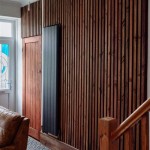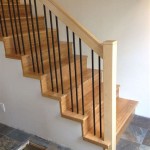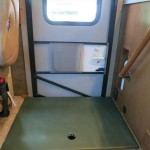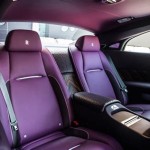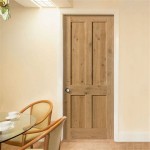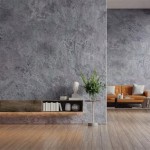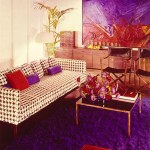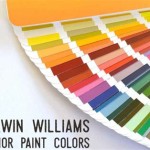Words to Describe Beautiful Interior Design Styles
Interior design is more than just arranging furniture; it's an art form that combines aesthetics, functionality, and personal expression to create captivating and harmonious living spaces. Describing beautiful interior design styles requires a comprehensive vocabulary that encompasses visual appeal, emotional impact, and practical considerations. The following discussion elucidates a range of descriptive terms applicable to various design styles, emphasizing clarity and precision.
Key Point 1: Describing Overall Aesthetic Qualities
When examining an interior design style, one of the first steps is to assess its overall aesthetic impression. Several descriptors come into play here, each contributing a nuanced understanding of the style's character.
Elegant: This term suggests refinement, sophistication, and grace. Elegant interiors often feature high-quality materials, carefully chosen color palettes, and a balance of ornate and simple elements. Think of classic chandeliers, silk drapes, and carefully curated artwork.
Minimalist: Minimalist design is characterized by simplicity, functionality, and a distinct lack of clutter. The aesthetic emphasizes clean lines, neutral colors, and open spaces, creating a sense of tranquility and airiness. “Understated elegance” could be a fitting descriptor for a particularly well-executed minimalist space.
Rustic: Rustic design embraces natural materials, raw textures, and a warm, inviting atmosphere. Exposed wood beams, stone fireplaces, and handcrafted furniture are common elements. The space often feels lived-in and comfortable, evoking a sense of history and connection to nature.
Modern: Modern design, often confused with contemporary design, refers to a specific period (roughly the early to mid-20th century) and emphasizes functionality, clean lines, and a lack of ornamentation. Materials like steel, glass, and concrete are frequently used. Characterizing a modern space might involve terms like "streamlined," "functional," and "geometric."
Contemporary: Contemporary design, on the other hand, is ever-evolving and reflects the current trends and innovations. It often incorporates elements from various other styles, creating a unique and dynamic aesthetic. Descriptors such as "eclectic," "innovative," and "trendy" might apply.
Glamorous: Glamorous interiors evoke a sense of luxury, opulence, and drama. They often feature rich colors, shimmering fabrics, metallic accents, and statement pieces. Think of Hollywood Regency or Art Deco styles, which exemplify this aesthetic. Terms like "luxurious," "decadent," and "dramatic" aptly describe these spaces.
Bohemian: Bohemian design is characterized by its free-spirited, eclectic, and unconventional nature. It embraces a mix of colors, patterns, textures, and cultural influences. Layered textiles, vintage furniture, and personal collections are common elements. The atmosphere is often relaxed, inviting, and slightly unconventional.
Industrial: Industrial design draws inspiration from factories, warehouses, and other industrial spaces. Exposed brick, concrete floors, metal fixtures, and raw materials are common features. The aesthetic is often described as "utilitarian," "raw," and "functional," with an emphasis on practicality and durability.
Coastal: Coastal design evokes a sense of relaxation, tranquility, and connection to the sea. Light colors, natural materials, nautical-inspired accents, and comfortable furnishings are typically used. The atmosphere is often described as "airy," "refreshing," and "serene."
Key Point 2: Describing Specific Design Elements
Beyond the overall aesthetic, describing specific design elements provides a more granular understanding of a particular style. These elements include color palettes, materials, textures, furniture, and lighting.
Color Palette: The color palette is a crucial aspect of any interior design style. Descriptors can range from "monochromatic" (using shades of a single color) to "vibrant" (featuring a variety of bright, saturated colors) to "muted" (using softened, desaturated colors). Other terms include "earthy," "neutral," "pastel," "jewel-toned," and "bold." The specific colors used and their arrangement contribute significantly to the overall mood and aesthetic.
Materials: Describing the materials used is essential. Terms like "natural," "synthetic," "organic," "reclaimed," "polished," and "matte" can be used to characterize the materials. For example, a space might feature "reclaimed wood," "polished concrete," or "organic cotton." The choice of materials contributes to the overall texture, durability, and environmental impact of the design.
Textures: Texture adds depth and visual interest to a space. Descriptors include "smooth," "rough," "soft," "hard," "glossy," "matte," "tactile," and "layered." A design might feature a "smooth silk" throw, a "rough-hewn" wooden table, or "layered textures" through the use of rugs, cushions, and artwork.
Furniture: Furniture style and arrangement are key components. Descriptors can refer to the furniture's shape ("curvilinear," "geometric," "angular"), its style ("antique," "vintage," "contemporary," "mid-century modern"), and its function ("ergonomic," "modular," "multifunctional"). For example, a space might feature "curvilinear sofas," "antique armoires," or "ergonomic desk chairs."
Lighting: Lighting plays a crucial role in setting the mood and highlighting specific features of a space. Descriptors include "ambient," "task," "accent," "natural," "artificial," "warm," "cool," "dim," and "bright." A room might feature "ambient lighting" to create a warm and inviting atmosphere, "task lighting" for focused work, and "accent lighting" to highlight artwork or architectural details. Furthermore, the style of the light fixtures themselves (e.g., "ornate chandeliers," "minimalist pendant lights," "industrial sconces") contributes to the overall aesthetic.
Key Point 3: Describing the Emotional Impact and Functionality
Beyond the visually appealing aspects, successful interior design also evokes specific emotions and serves a practical purpose. Describing these aspects adds another layer of understanding to the overall design.
Emotional Impact: An interior design can evoke a range of emotions, such as "calming," "energizing," "inviting," "sophisticated," "playful," or "serene." The color palette, lighting, and overall design style all contribute to the emotional impact. For example, a room with soft colors, natural light, and comfortable furniture might be described as "calming" and "inviting," while a room with bold colors, geometric patterns, and modern furniture might be described as "energizing" and "sophisticated."
Functionality: A well-designed space is not only beautiful but also functional. Descriptors related to functionality include "practical," "efficient," "organized," "spacious," "accessible," and "user-friendly." A "practical" kitchen design might feature ample storage space and easy-to-clean surfaces. An "efficient" home office design might maximize space and minimize distractions. "Accessibility" is a crucial consideration in designing for individuals with disabilities, ensuring that the space is usable and comfortable for everyone.
Harmonious: A harmonious interior design is one where all the elements work together to create a cohesive and balanced space. The colors, textures, furniture, and lighting are carefully chosen and arranged to create a sense of unity and visual appeal. Descriptors such as "balanced," "cohesive," "unified," and "well-proportioned" can be used to describe a harmonious design. Achieving harmony requires a keen understanding of design principles and an attention to detail.
Personalized: A truly beautiful interior design is one that reflects the personality and lifestyle of the occupants. It incorporates personal touches, such as artwork, photographs, and collections, that make the space feel unique and inviting. Descriptors such as "personalized," "expressive," "individual," and "unique" can be used to describe a design that reflects the occupant's taste and preferences. Personalization adds character and warmth to a space, making it feel like a true home.
In conclusion, accurately describing beautiful interior design styles requires a comprehensive understanding of the aesthetic qualities, specific design elements, emotional impact, and functional considerations. By utilizing a rich and varied vocabulary, one can effectively communicate the nuances and complexities of interior design, fostering a deeper appreciation for the art form.

22 Popular Interior Design Term Used By Expert Designers Beautiful Homes

Organization New Year Resolutions Interior And Landscape Design

Interior Design Styles 101 20 Décor You Need To Know Zillow

Interior Design Terminology Every Student Must Know

22 Popular Interior Design Term Used By Expert Designers Beautiful Homes

How To Nail The Feeling You Want For Your Home S Décor Michael Helwig Interiors

2024 S 20 Hottest Interior Design Styles Pure By Ami Mckay Vancouver

Ever Find Yourself Struggling To Pinpoint Your Home Decor Style Don T Worry You Re Not Alone Today I M Here Help Decode Design Preferences With Just Three Simple Words For Each Room

Vinyl Wall Decal Beauty Salon Interior Decor Words Cloud Spa Stickers Mural Ig5775

Words Of Wisdom Vanessa Francis Interior Design
Related Posts

